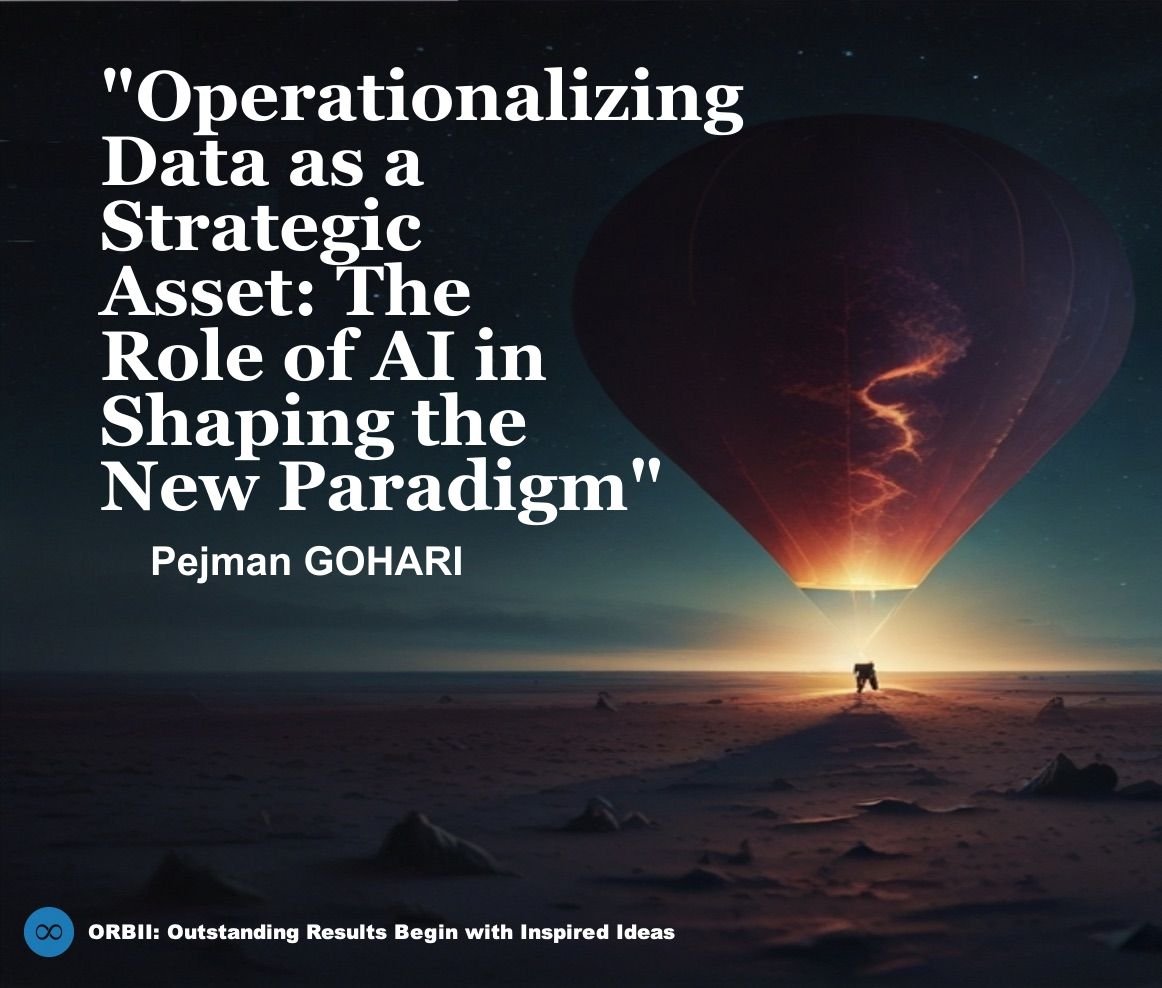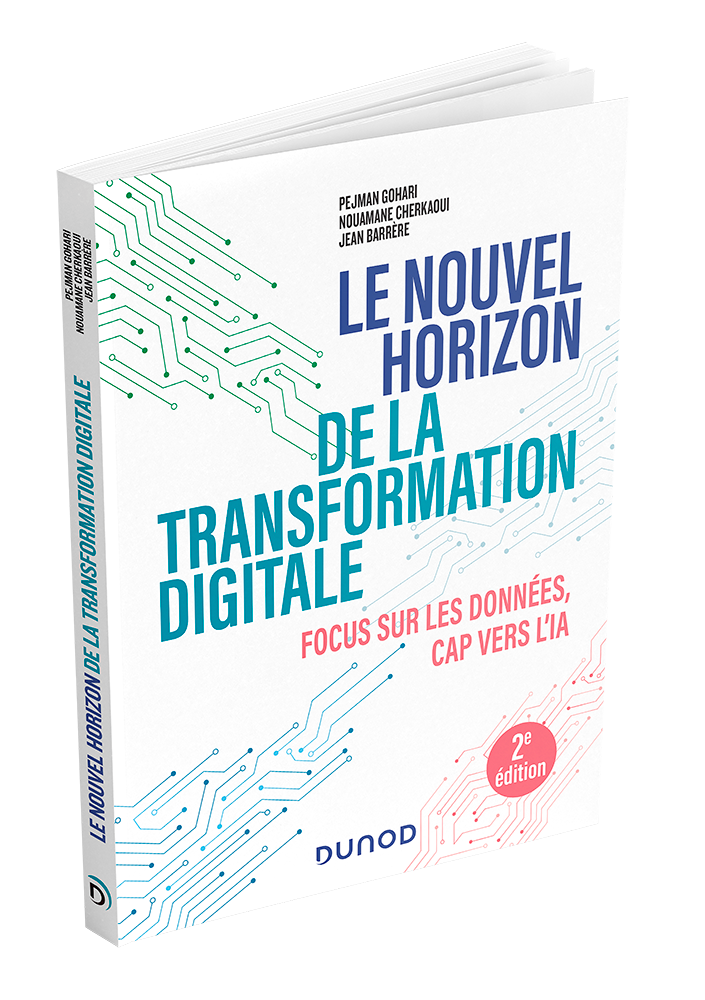AI and Data: Shaping the New Paradigm
Operationalizing Data as a Strategic Asset: The Role of AI in Shaping the New Paradigm
As data continues to emerge as one of the most valuable assets for organizations, operationalizing this data is becoming a crucial element of successful business strategy. For CXOs, this requires a fundamental shift in how data is perceived, governed, and utilized across the enterprise. The rise of advanced artificial intelligence (AI) technologies presents new opportunities to enhance data governance, streamline operations, and unlock the full potential of data as a strategic business asset.
From Passive Resource to Strategic Asset
Traditionally, data was often treated as a passive resource—used primarily for reporting, compliance, and internal analysis. However, in the current digital economy, organizations are recognizing the strategic importance of data as an enabler of competitive advantage. The ability to collect, analyze, and leverage data effectively has become a core differentiator for leading organizations, enabling them to outpace competitors in areas such as innovation, customer experience, and operational efficiency.
To operationalize data as a strategic asset, companies need to adopt a holistic view of their data ecosystems. This begins with:
- Establishing clear data ownership: Each dataset must have designated owners who are accountable for its accuracy, security, and relevance. This ensures that data is curated with intent, maintained rigorously, and utilized effectively across the organization.
- Creating transparent data flows: Understanding where data comes from, how it is processed, and where it is stored is critical for governance and decision-making. CXOs should advocate for technologies like data lineage tools that provide visibility into data pipelines, ensuring traceability and integrity at every stage.
- Enhancing data quality: Poor data quality leads to flawed decision-making, inefficient operations, and missed opportunities. By adopting comprehensive data quality management practices—including data validation, cleansing, and enrichment—organizations can ensure that their data is accurate, reliable, and timely.
The New Role of AI in Data Governance
Artificial intelligence has transformed how organizations approach data governance. Traditional governance frameworks were largely manual, requiring significant human intervention to enforce policies, monitor data quality, and ensure compliance. However, as the scale and complexity of data have grown, these manual processes have become inadequate. AI-powered solutions are now redefining data governance by automating critical tasks and providing insights that were previously impossible to achieve.
Automated Data Discovery and Classification
One of the major breakthroughs in AI-driven governance is the automation of data discovery and classification. Using AI, organizations can automatically scan vast amounts of structured and unstructured data to identify sensitive information, personally identifiable data, and other critical assets. This reduces the time and resources required to manually tag and classify data, while also minimizing the risk of human error. Automated classification also ensures that data protection regulations—such as GDPR and CCPA—are enforced consistently across the organization.
AI-Driven Anomaly Detection
AI is enabling organizations to detect anomalies in data usage and access patterns in real time. This capability is essential for identifying potential data breaches, fraud, or non-compliant activities. By continuously monitoring data transactions and applying machine learning models, organizations can flag suspicious behavior and trigger automatic alerts for investigation. This proactive approach to data security ensures that potential threats are addressed before they escalate into major incidents.
Predictive Data Governance
The next evolution of AI in governance is predictive capabilities. By analyzing historical data patterns and user behavior, AI can predict future data quality issues, compliance risks, or operational bottlenecks. These predictive insights allow organizations to take preemptive action, preventing problems before they arise and ensuring smoother, more efficient operations. For instance, AI can predict when a certain data source is likely to degrade in quality, prompting the data team to intervene and address the issue before it affects business decisions.
Enhancing Decision-Making with AI-Driven Insights
Beyond automation, AI enables advanced analytics that can drive better decision-making. AI models can identify hidden patterns and trends within datasets that may not be apparent through traditional analysis. These insights can be used to optimize business strategies, improve customer experiences, and uncover new revenue opportunities. For CXOs, this represents a powerful tool to make more informed, data-driven decisions across all levels of the organization.
AI's Role in New Governance Models
AI is not just enhancing existing data governance practices—it is also reshaping governance models themselves. Historically, governance was viewed as a top-down approach, where strict rules were imposed by IT or compliance teams. However, with AI’s integration, governance is becoming more decentralized and dynamic.
- Decentralized Data Governance: AI allows data governance to be implemented across multiple business units without relying on a centralized authority. Using AI-driven tools, each department can enforce governance policies that are tailored to its specific needs while ensuring overall alignment with corporate guidelines. This flexibility allows for more agility in data management and reduces bottlenecks associated with traditional, centralized governance structures.
- Real-Time Policy Enforcement: AI’s ability to operate in real time means that governance policies can be enforced dynamically. For example, AI systems can automatically enforce data access controls based on contextual factors such as user location, device type, or time of access. This ensures that data governance is not static but evolves in response to real-time conditions, improving both security and operational efficiency.
From Insight to Action: CXO Strategies for AI-Powered Governance
For CXOs looking to harness the power of AI in data governance, there are several key strategies to consider:
- Invest in AI-Driven Governance Platforms: Leading companies are adopting AI-enabled governance platforms that integrate data discovery, classification, and protection into a single ecosystem. These platforms can reduce manual effort, improve data quality, and ensure compliance at scale.
- Prioritize Real-Time Governance: In an era of instant data access and decision-making, real-time governance is crucial. CXOs should implement AI tools that enable continuous monitoring and real-time enforcement of governance policies, ensuring that data is secure and compliant at all times.
- Foster Cross-Functional Collaboration: While AI can automate many aspects of governance, cross-functional collaboration remains essential. CXOs must work closely with IT, legal, and business leaders to ensure that governance frameworks are aligned with broader organizational goals and are adaptable to new business challenges.
The Strategic Imperative
Operationalizing data as a strategic asset is not merely an IT initiative—it is a business imperative that touches every facet of the organization. As AI continues to revolutionize data governance, CXOs must lead the charge by embracing AI-driven governance models that enable both compliance and innovation. The future of data governance lies in agility, automation, and AI-powered insights, and those who adopt these technologies will be positioned for long-term success in the digital economy.
This approach, grounded in the latest AI innovations and strategic data management insights, allows CXOs to transform their organizations into data-driven powerhouses. By operationalizing data and integrating AI into governance frameworks, companies can achieve unprecedented levels of efficiency, compliance, and competitive differentiation.
Licence: This article is published under the MIT Licence.



